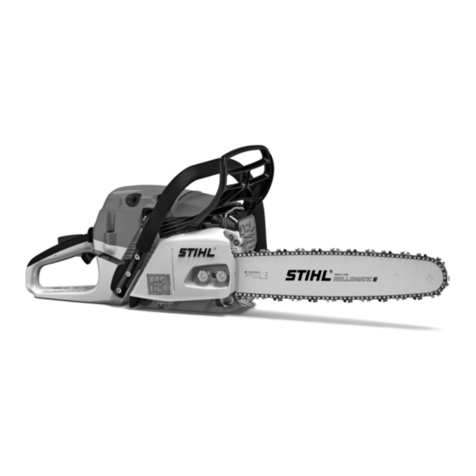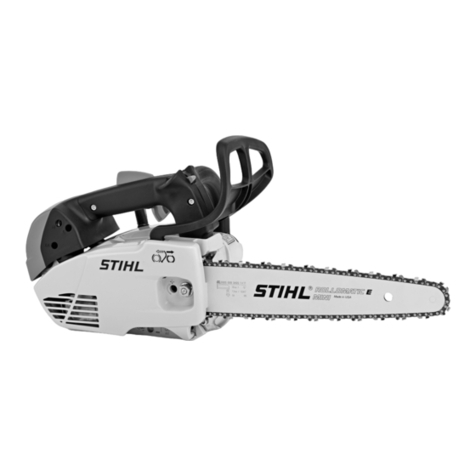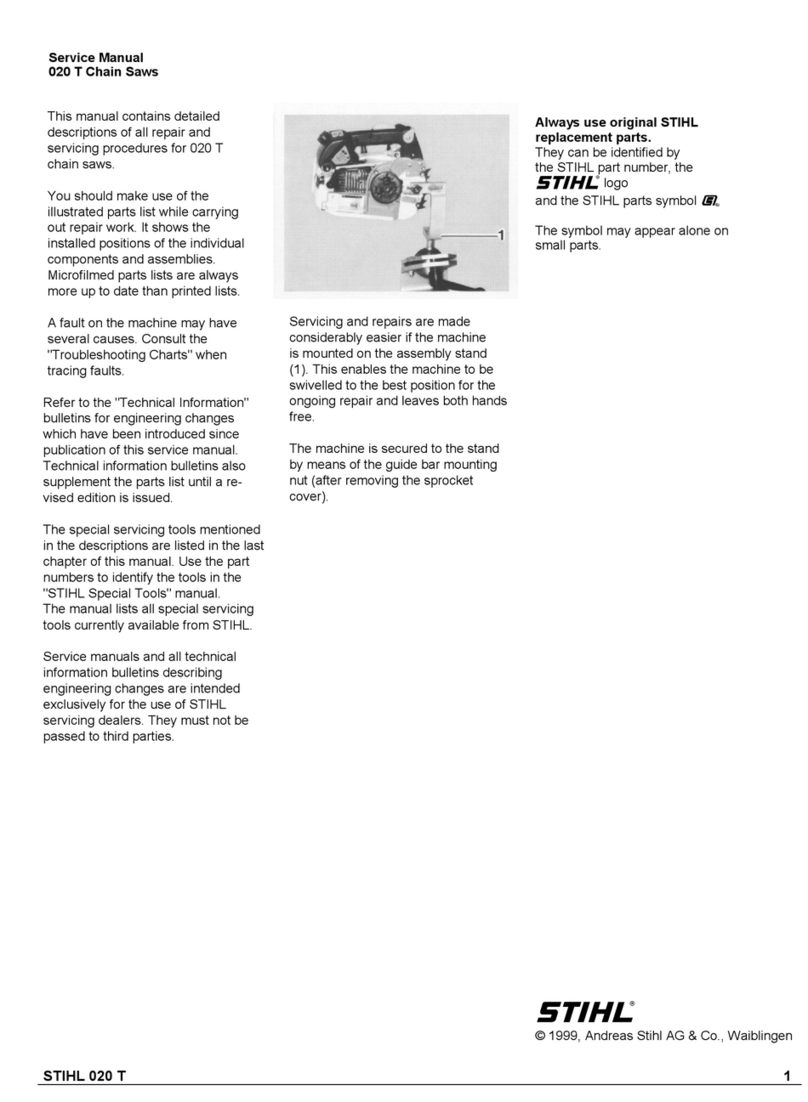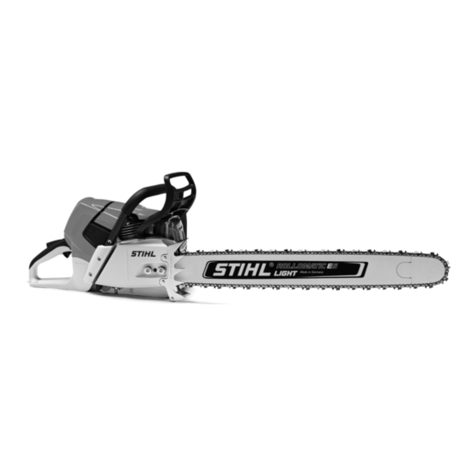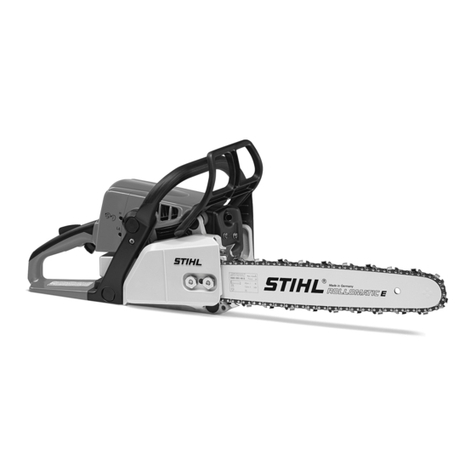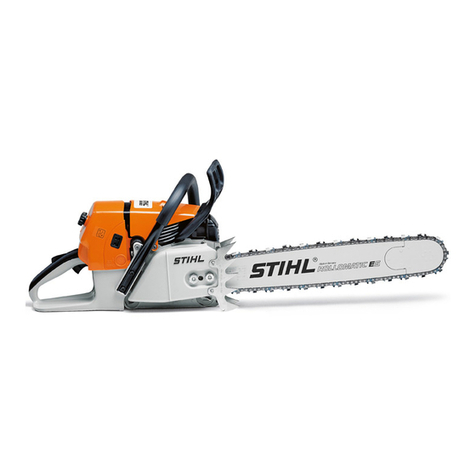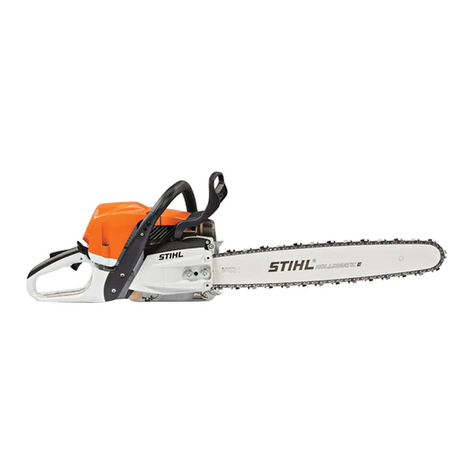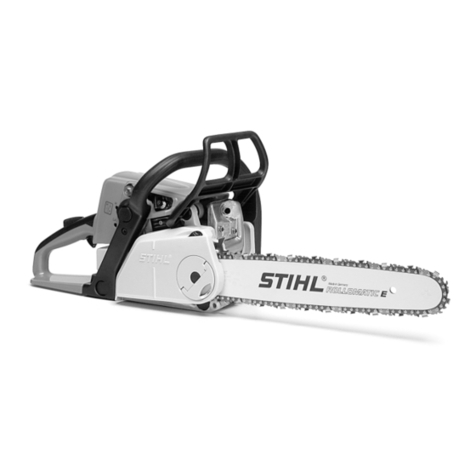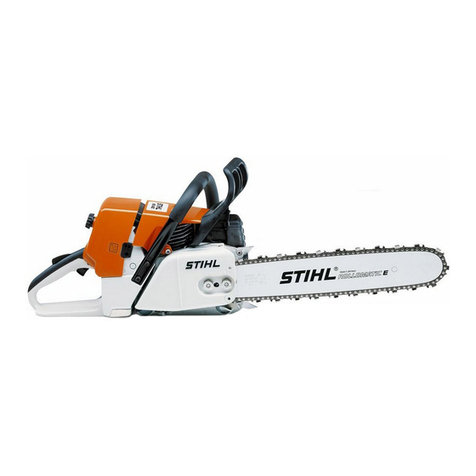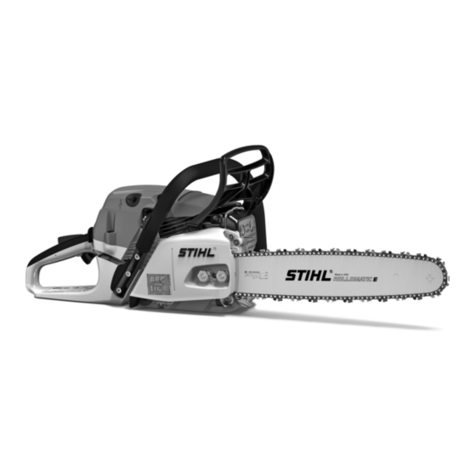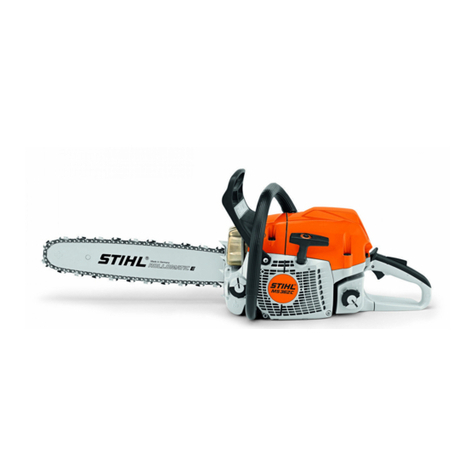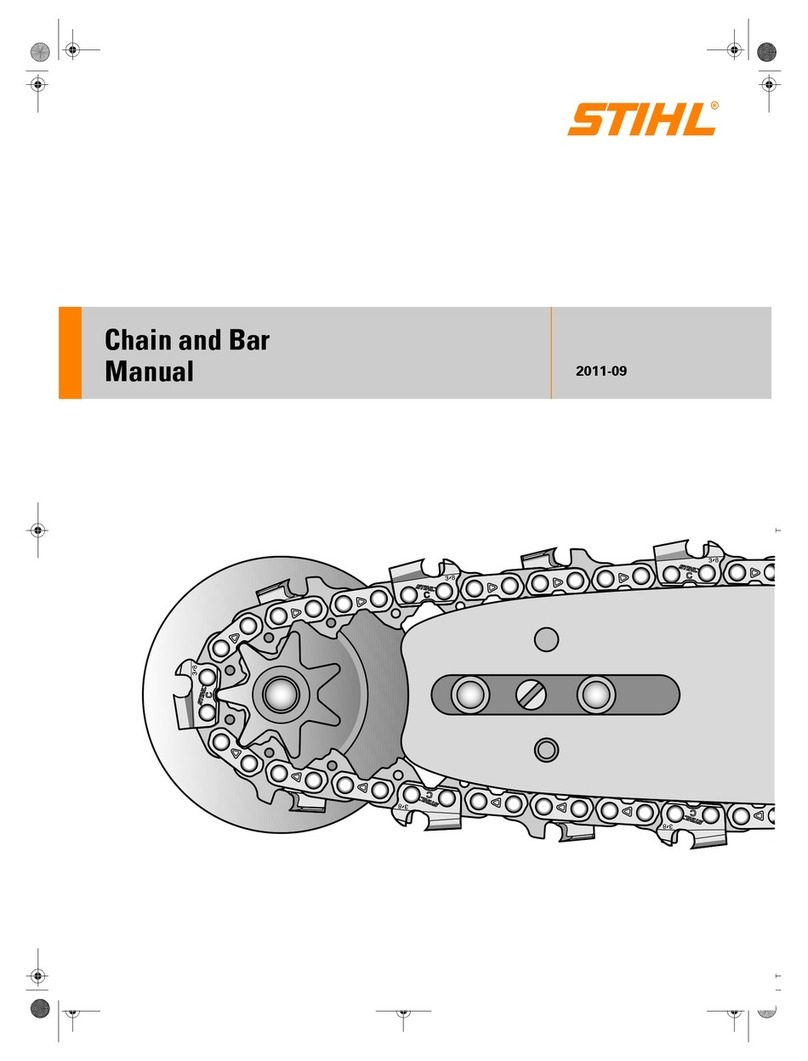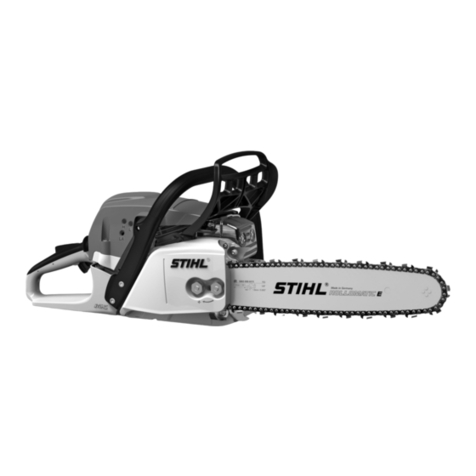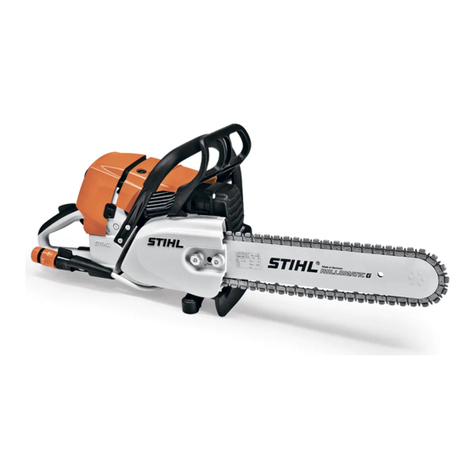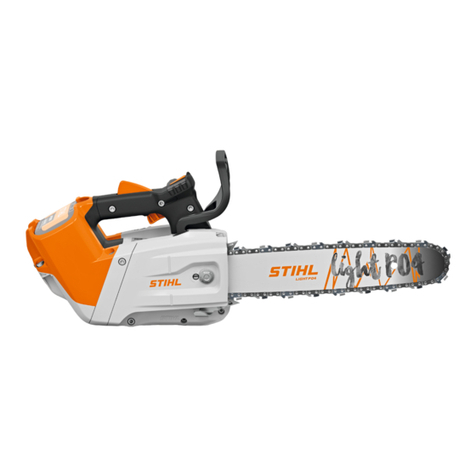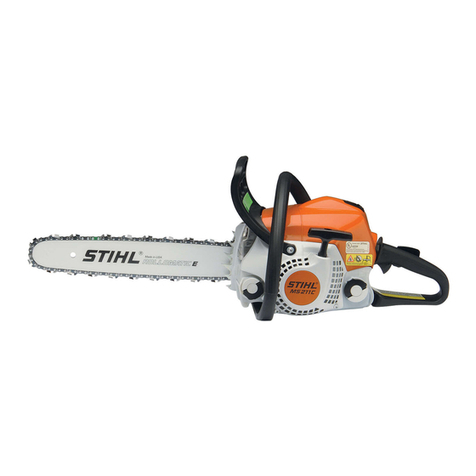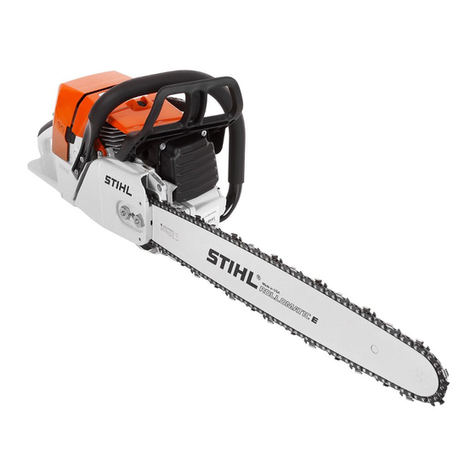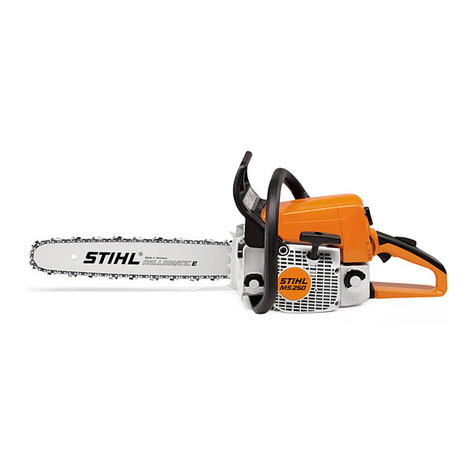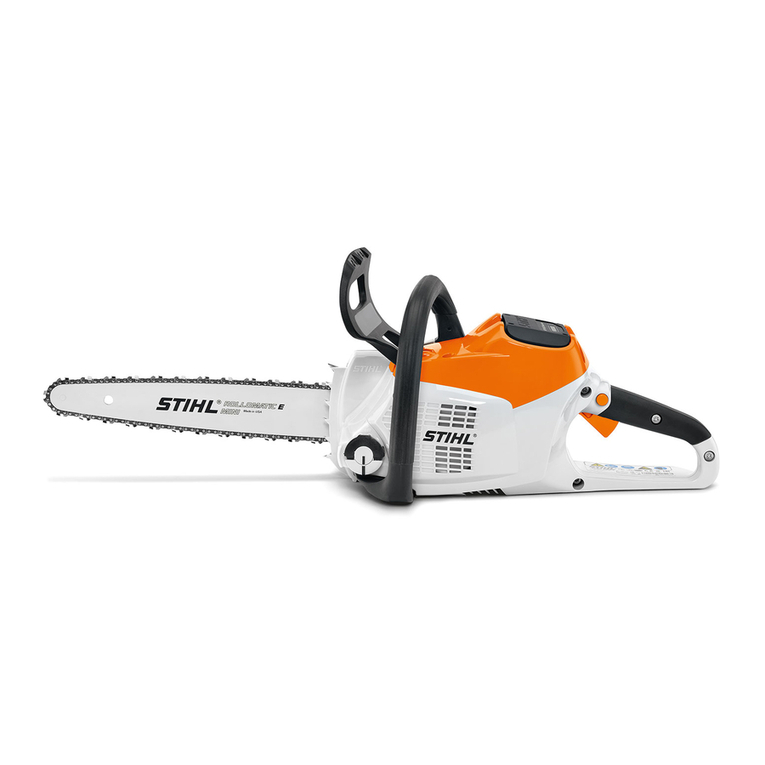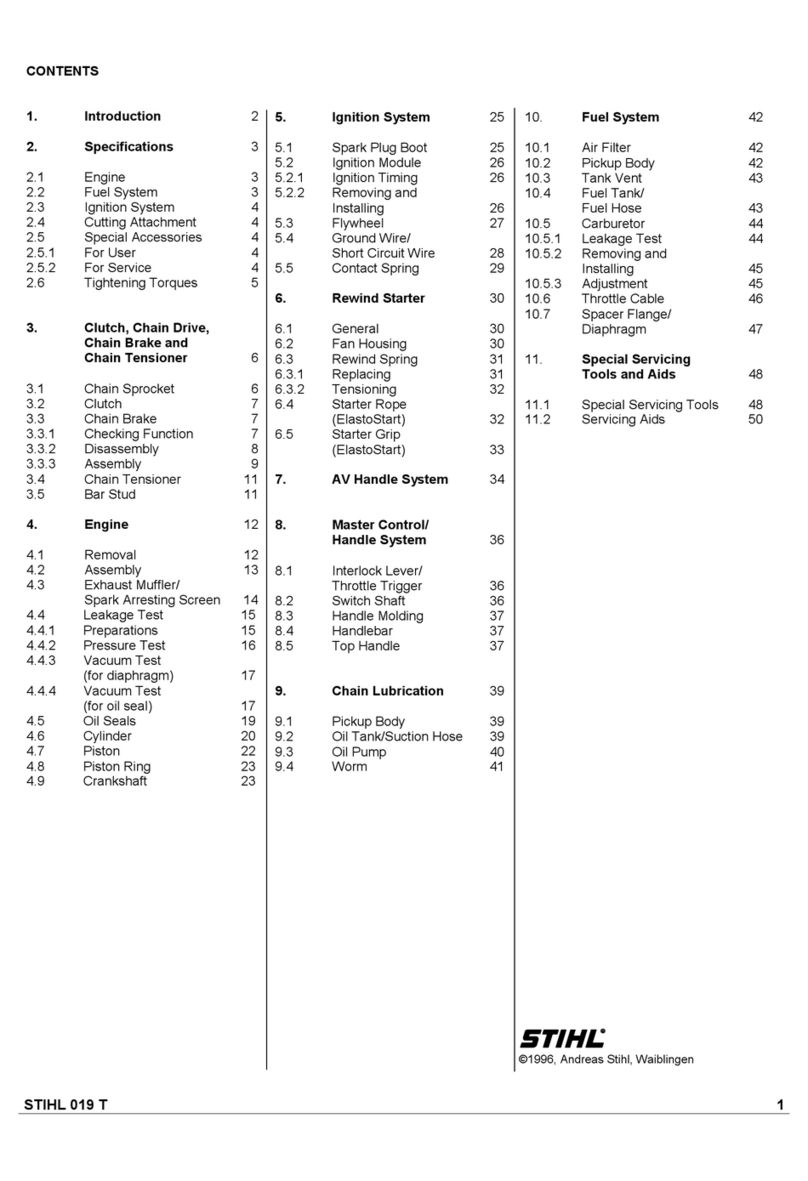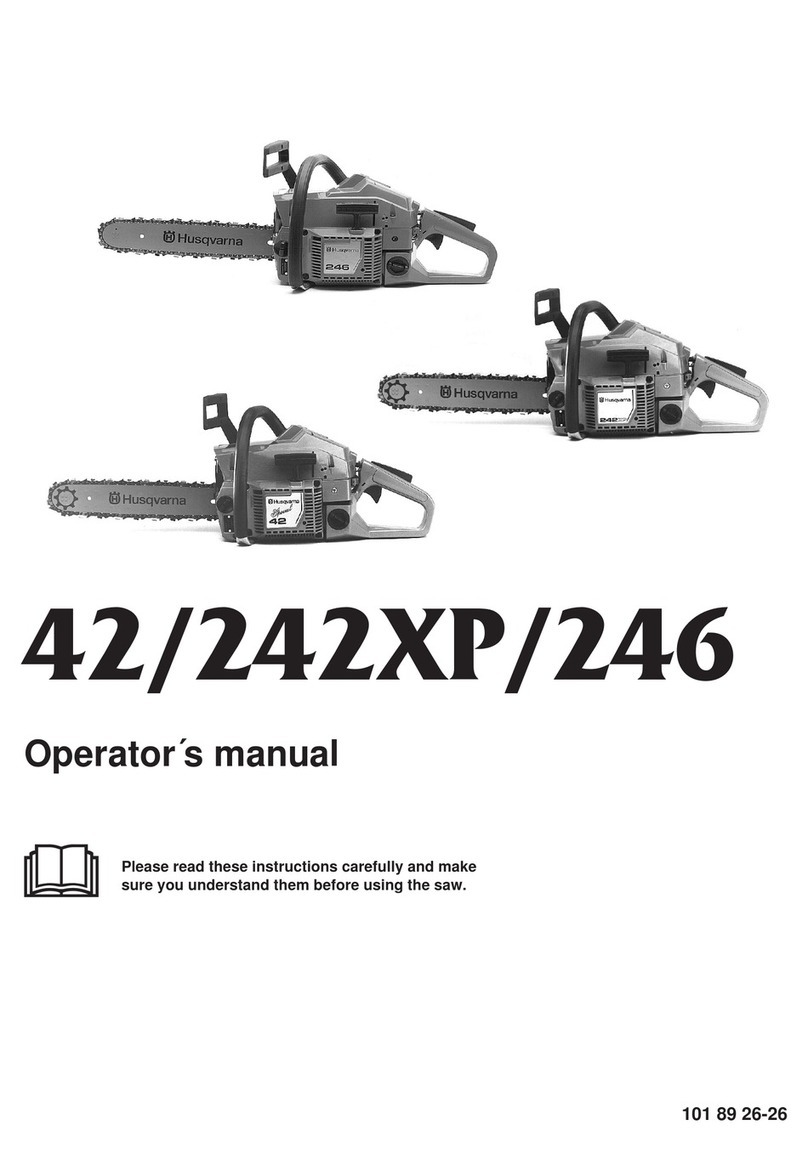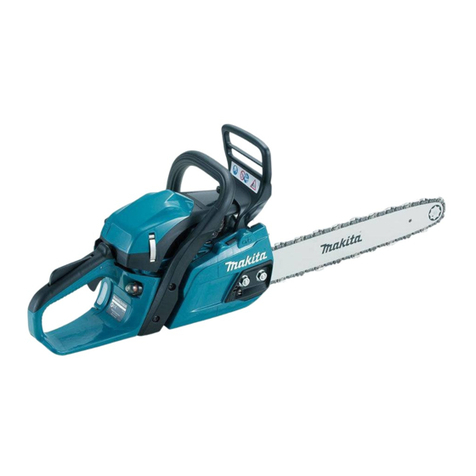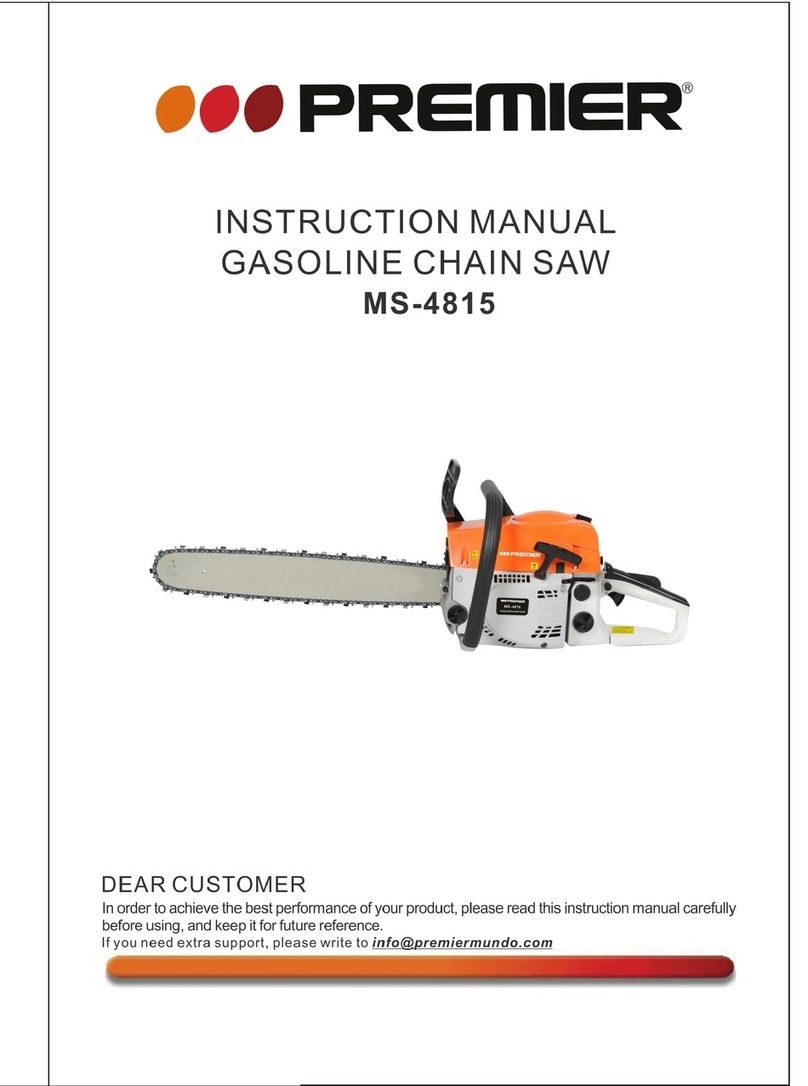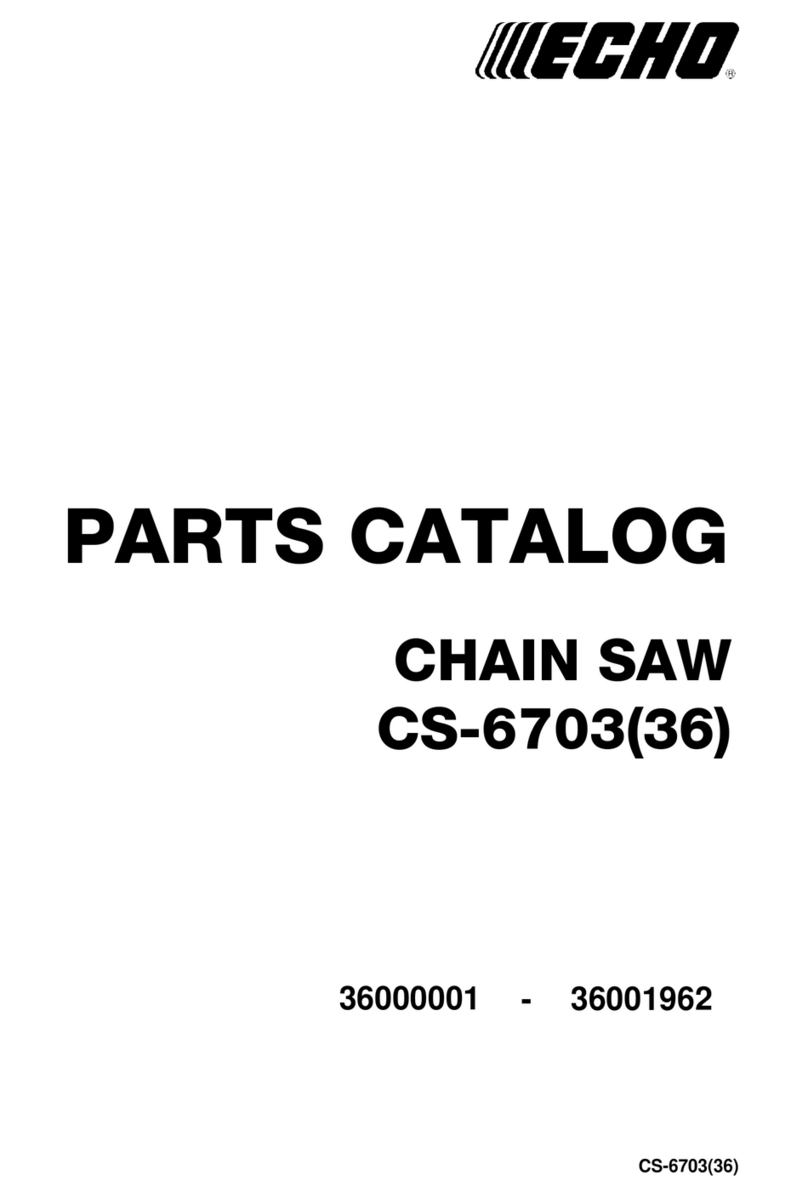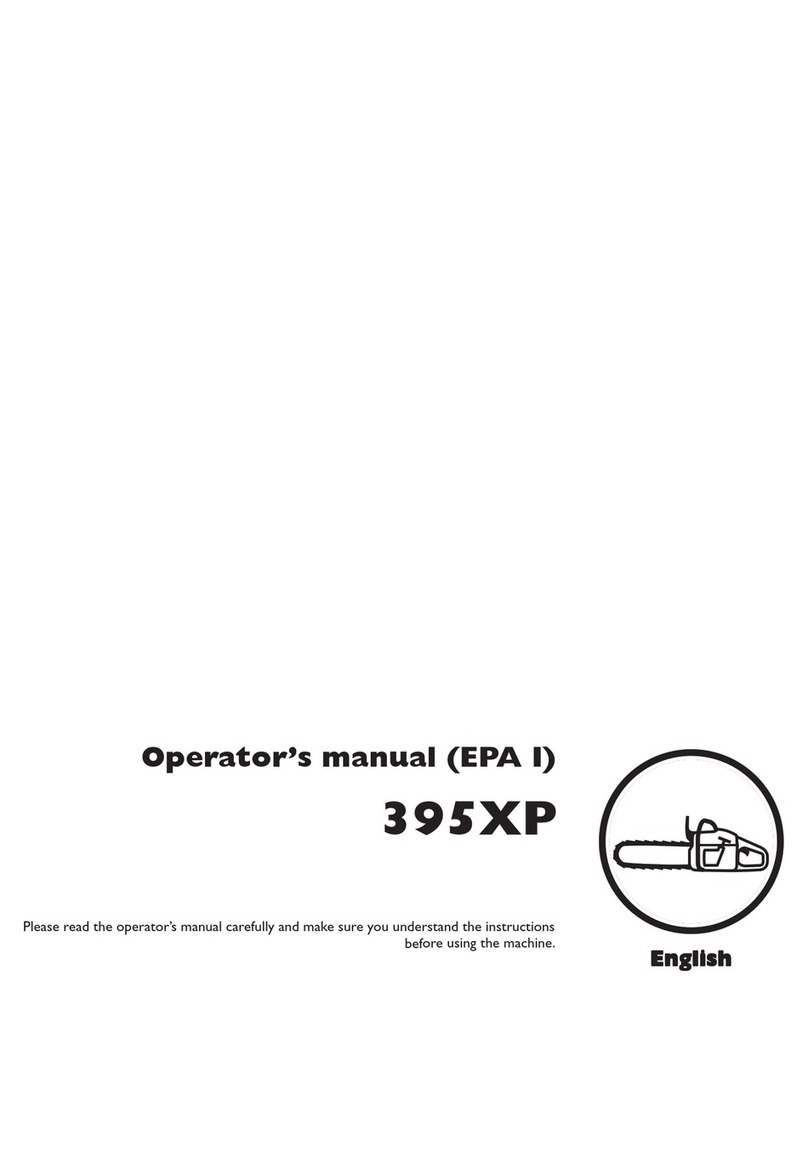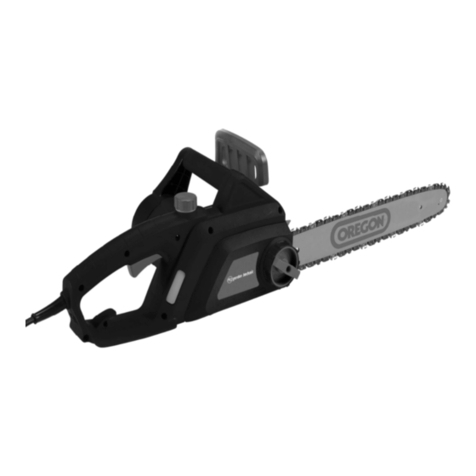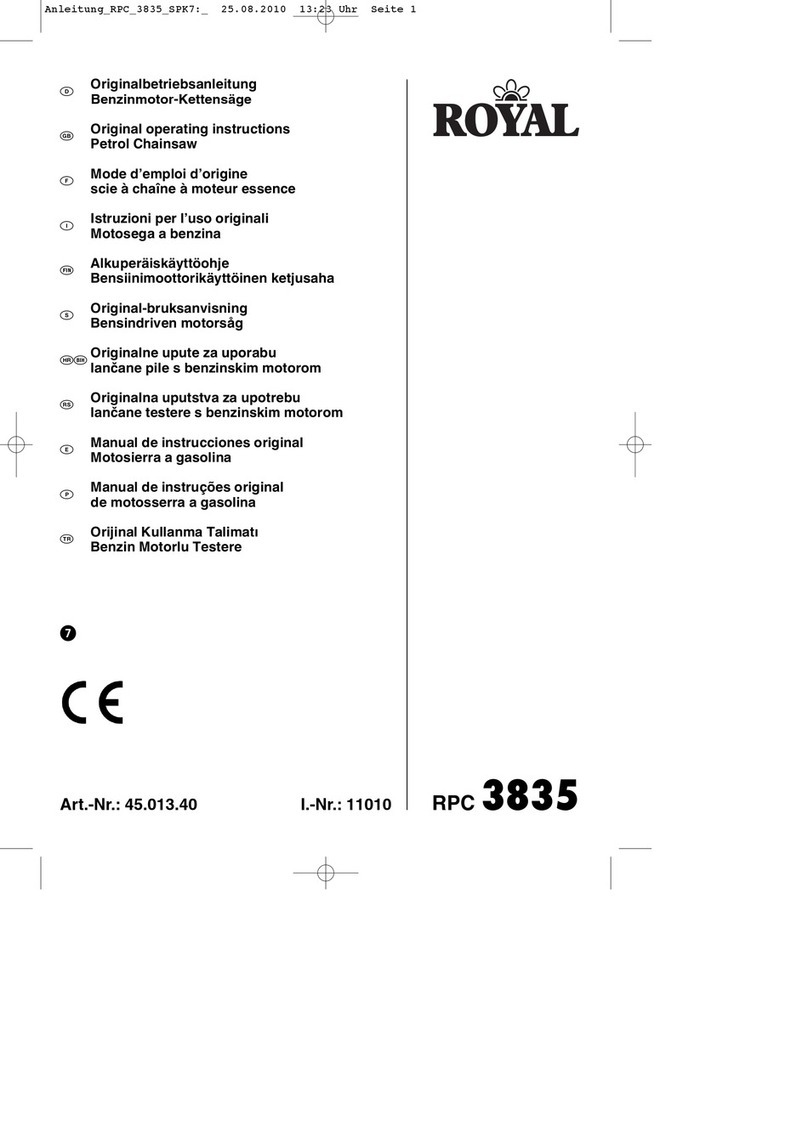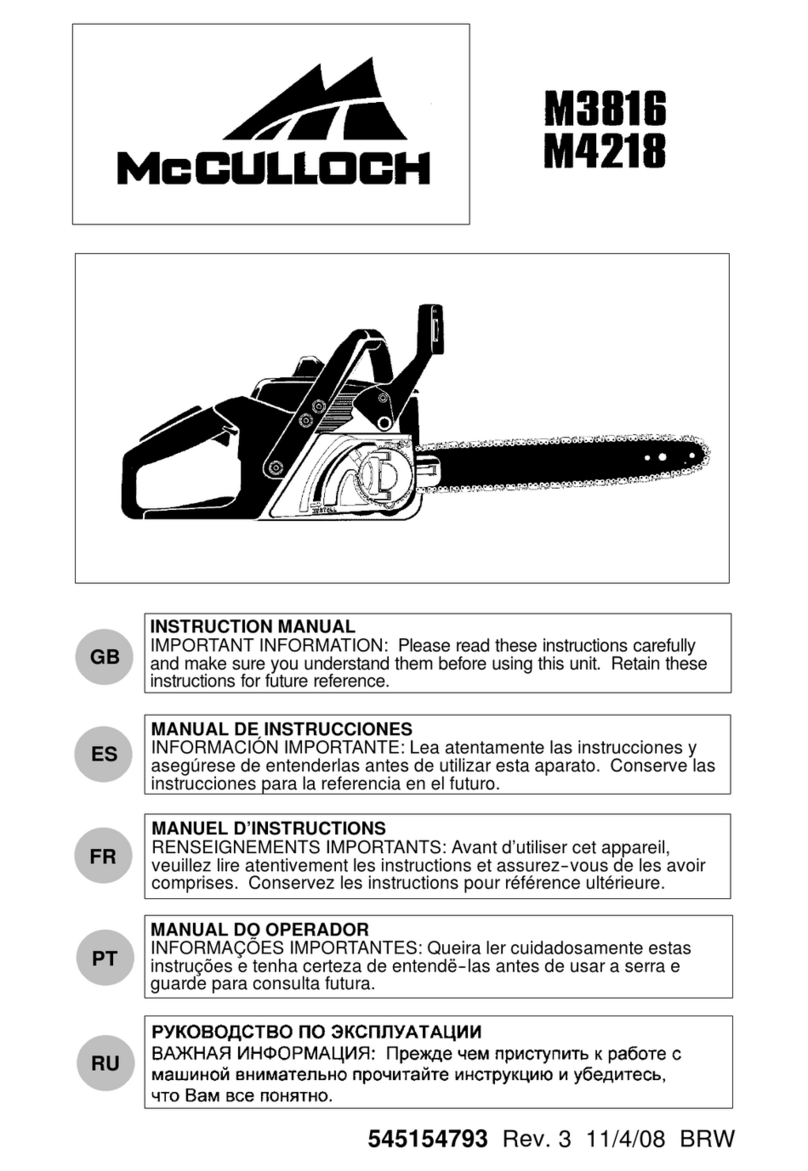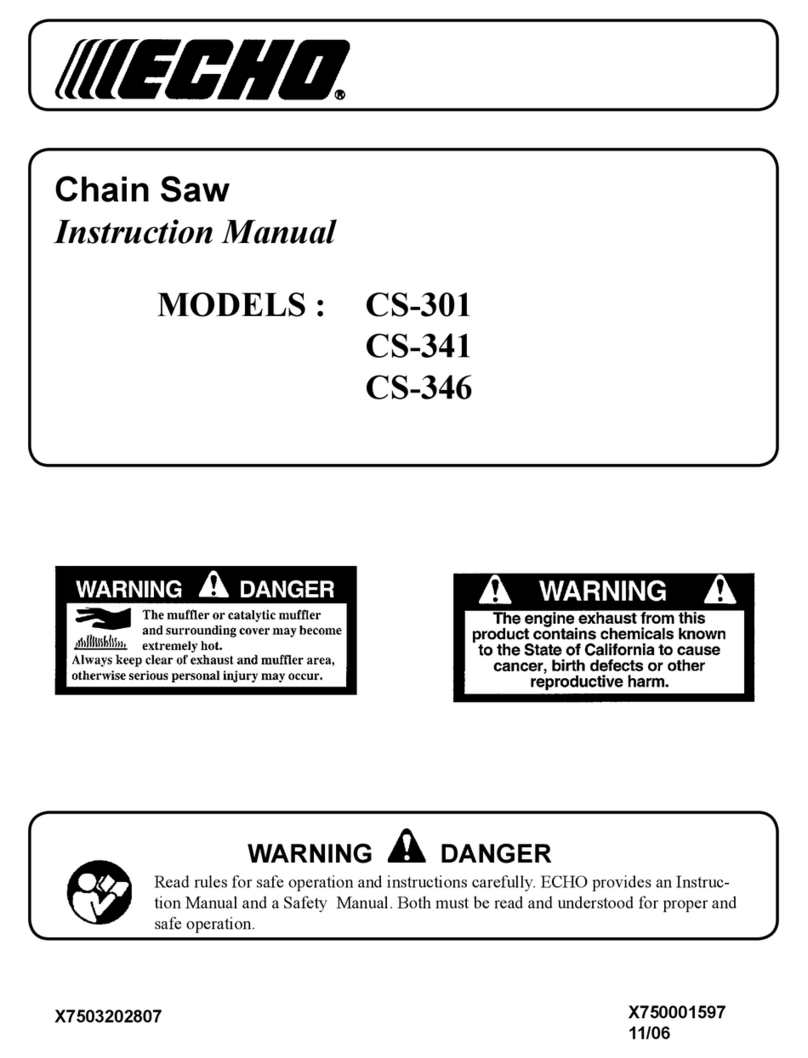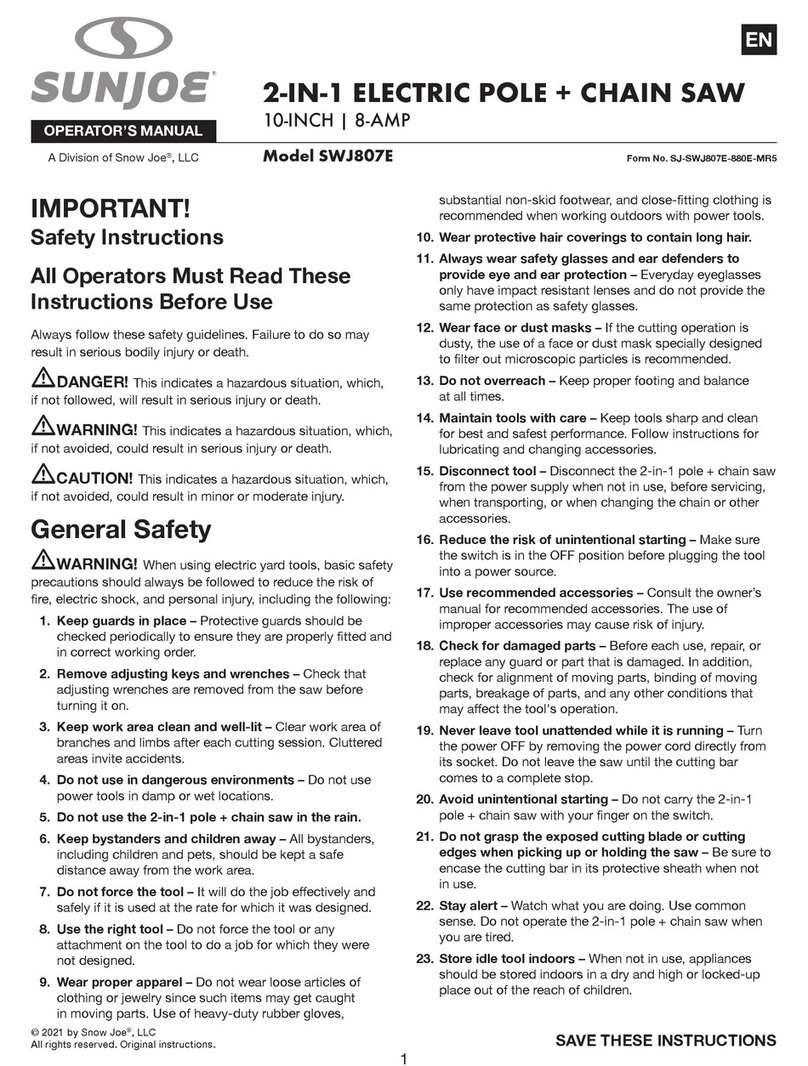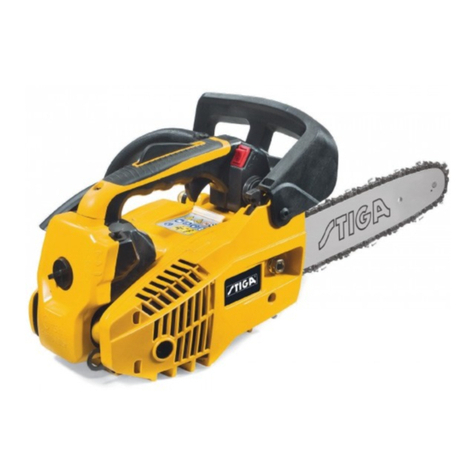
MS 201 TC-M
English
8
NTo return the cap to the open
position for installation, turn the cap
(with the grip up) until it drops fully
into the tank opening. Next, twist the
cap counterclockwise as far as it will
go (approx. 1/4 turn) – this will twist
the base of the cap into the correct
position for installation. Then, twist
the cap clockwise, closing it
normally.
NIf your cap still does not tighten
properly, it may be damaged or
broken; immediately stop use of the
unit and take it to your authorized
STIHL dealer for repair.
See also the "Fueling" chapter in your
Instruction Manual for additional
information.
Before Operation
Take off the chain guard (scabbard) and
inspect the chain saw for proper
condition and operation. (See the
maintenance chart near the end of the
instruction manual.)
WARNING
Always check your chain saw for proper
condition and operation before starting,
particularly the throttle trigger, throttle
trigger lockout, stop switch and cutting
attachment. The throttle trigger must
move freely and always spring back to
the idle position. The Master Control
Lever / stop switch must move easily to
STOP, 0 or †. Never attempt to modify
the controls or safety devices.
WARNING
Check fuel system for leaks, especially
the visible parts, e.g., filler cap, hose
connections, manual fuel pump (only for
chain saws equipped with a manual fuel
pump). Do not start the engine if there
are leaks or damage – risk of fire! Have
the chain saw repaired by a STIHL
servicing dealer before using it.
WARNING
Check that the spark plug boot is
securely mounted on the spark plug – a
loose boot may cause arcing that could
ignite combustible fumes and cause a
fire.
For proper assembly of the bar and saw
chain follow the procedure described in
the chapter "Mounting the Bar and
Chain" of your instruction manual.
STIHL Oilomatic saw chain, guide bar
and sprocket must match each other in
gauge and pitch. Before replacing any
bar and chain, see the chapter entitled
"Specifications" in the instruction
manual and the chapter "Reactive
Forces including Kickback".
Since longer bars add weight and may
be more difficult to control, select the
shortest bar that will meet your cutting
needs.
WARNING
Proper tension of the chain is extremely
important. In order to avoid improper
setting, the tensioning procedure must
be followed as described in your
manual. Always make sure the
hexagonal nut(s) for the sprocket cover
is (are) tightened securely after
tensioning the saw chain in order to
secure the bar. Never start the chain
saw with the sprocket cover loose.
Check chain tension once more after
having tightened the nut(s) and
thereafter at regular intervals (whenever
the saw is shut off). If the saw chain
becomes loose while cutting, shut off the
engine and then tighten. Never try to
adjust the saw chain while the engine is
running!
WARNING
After adjusting a saw chain, start the
chain saw, let the engine run for a while,
then switch engine off and recheck saw
chain tension. Proper saw chain tension
is very important at all times.
Left: Bottom of cap in closed posi-
tion – inner mark (1) in line
with outer mark.
Right: Bottom of cap in correct posi-
tion for installation – inner
mark is under the grip and
not in line with the outer
mark.
